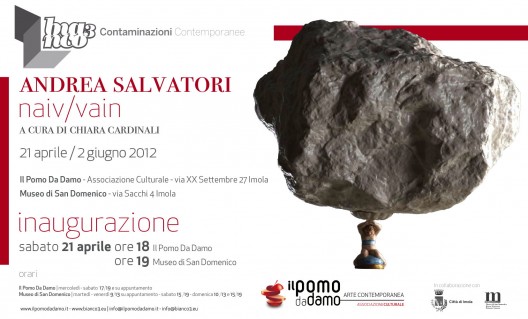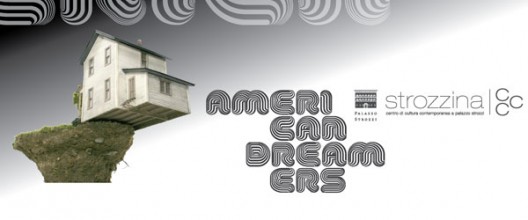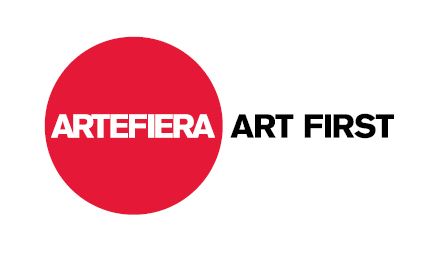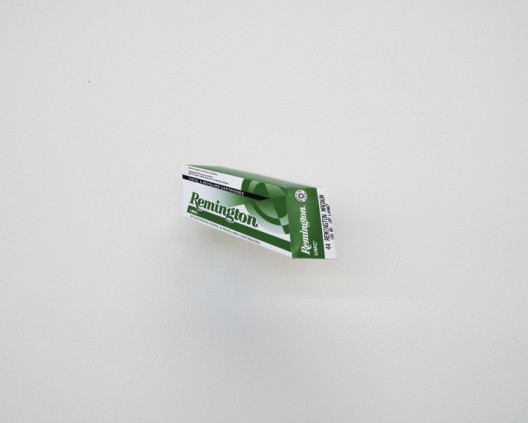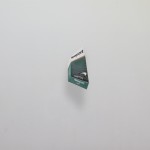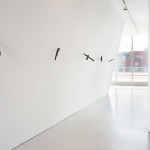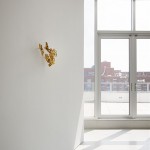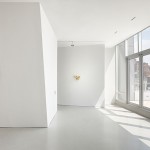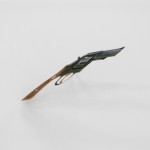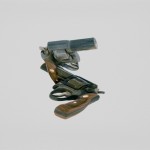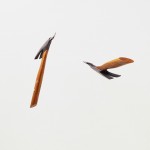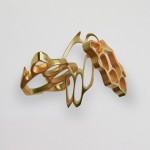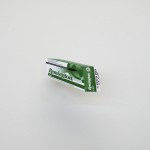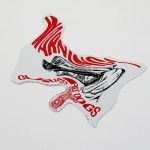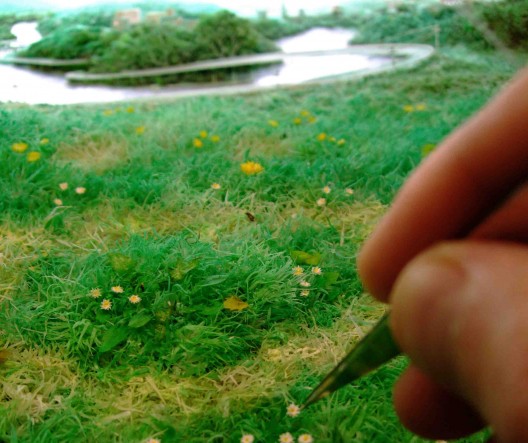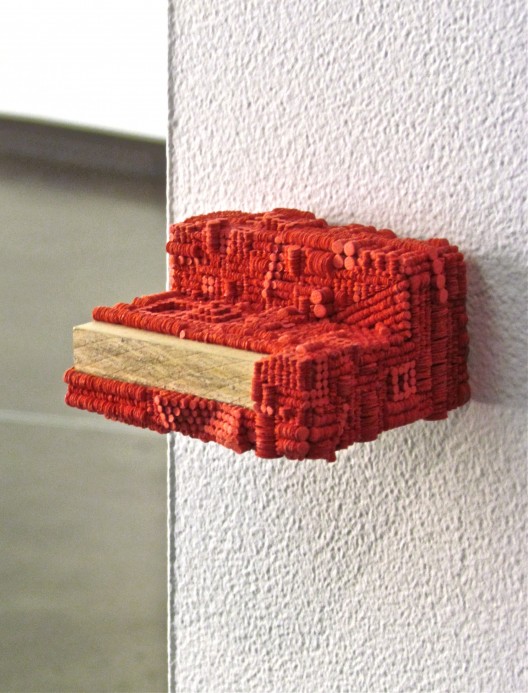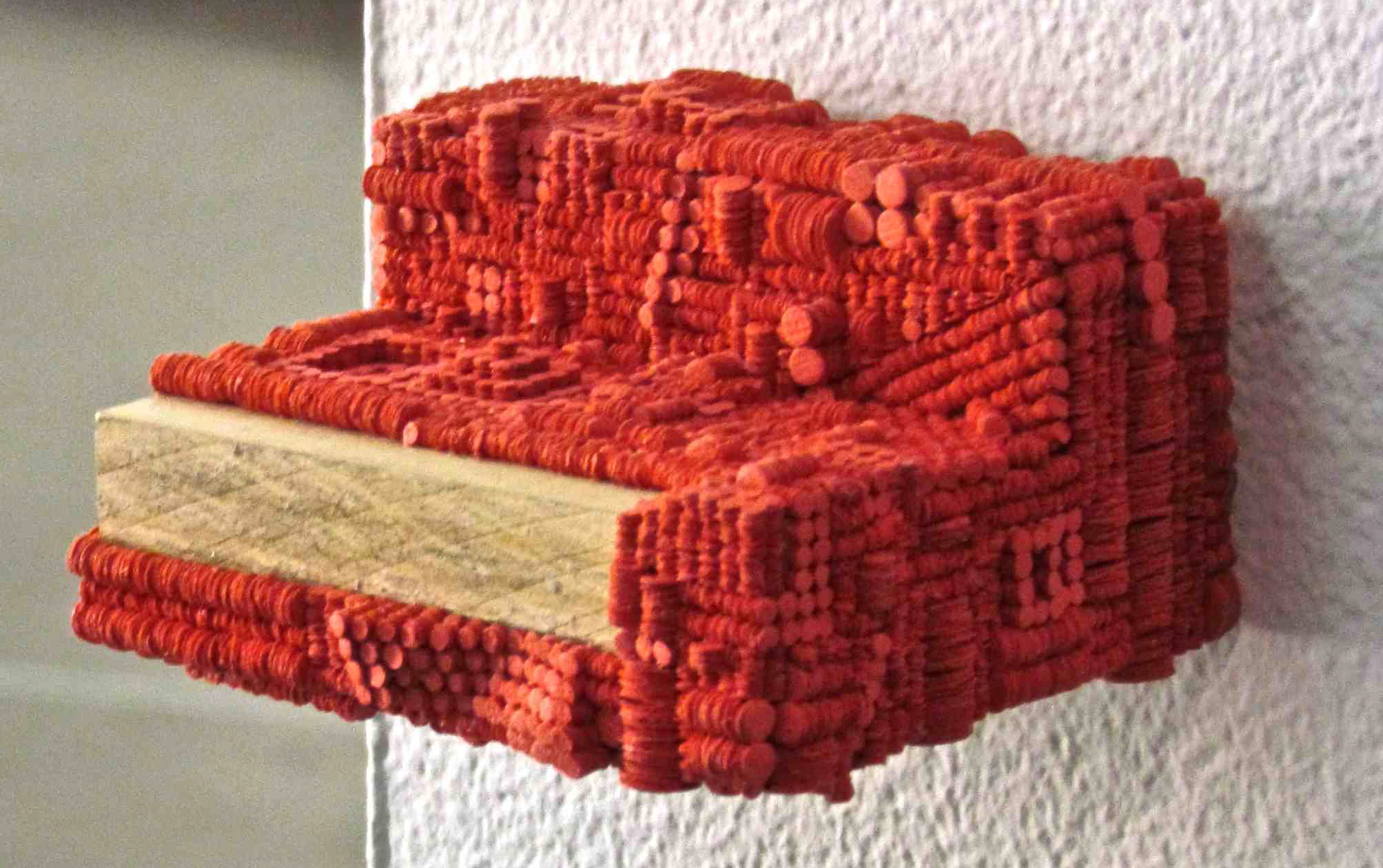La personale di Andrea Salvatori è un percorso di evoluzione concettuale e stilistica dai primi lavori ai più recenti. Il linguaggio materico che usa Salvatori è la ceramica, nelle svariate declinazioni e appropriazioni. Il pensiero costante nella materia e la ricerca della perfezione nella rappresentazione portano Salvatori a costruire le mini-vicende dei suoi lavori, esercizi raffinati dove linnocenza e lingenuità apparente dei personaggi (da qui luso del termine tedesco NAIV- ingenuo) è solo apparente, trasformandosi in orgoglio e ironica vanità (da qui il termine inglese VAIN vanitoso).
La mostra di Andrea Salvatori si svolgerà allinterno di due spazi: il Museo di San Domenico, recentemente restaurato, alloggiato negli spazi dellomonimo ex convento (costruito a partire dal 1250) che espone le collezioni darte della cittá dalle piú antiche fino a quelle dei nostri giorni; il Pomo da DaMo, spazio nuovo, ancora vergine, che funge da osservatorio di sperimentazione artistica e culturale.
La sede del Museo di San Domenico ospita le opere meno recenti dellartista, che si contraddistinguono per luso di personaggi di mondi magici e fiabeschi, ai quali viene negato un lieto fine. Tra queste, per ricordarne alcune, cè No Title (Big Mandala) (2005), composizione di infiniti pezzettini di corpi mostruosi, abilmente affettati da una damina dispirazione settecentesca; No title (Suicide nr.1) (2005), dove un raffinato e algido robot, legato da un cappio, è salutato da una banda di angioletti musici; No title (Dragon), 2005, un dragone decapitato da una signorina apparentemente sommessa. Questi e altri lavori compaiono allinterno di grandi sale-contenitrici di beni storico-artistici antichi, come incursioni delicate e ironiche, mai violente.
Nel Pomo da Damo sono concentrati i lavori degli ultimi anni, che si caratterizzano per una maggiore essenzialità nei colori e nelle forme e un minimalismo nelle rappresentazioni. Come Fucked Up angel (2007), dove il puttino che affianca una stella di grandi dimensioni gioca ancora al contrasto naiv-vain ma viene soffocato dalla sua bellezza.
NAIV VAIN è la mostra inaugurale di Bianco3, progetto curatoriale di Chiara Cardinali. Il titolo del progetto allude al capovolgimento del concetto di cubo bianco e allintento di superare la dicotomia tra gli spazi espositivi deputati allarte privata, algidi e decontestualizzanti e gli spazi pubblici, predisposti a unarte contingente al suo intorno.
Bianco3 è un percorso teorico curatoriale in progress, che si sviluppa attraverso collaborazioni con linguaggi e pratiche artistiche diverse. La prima fase di Bianco3 si concretizza in Contaminazioni Contemporanee, una rassegna di mostre personali in distinti contesti espositivi e relazionali.
La rassegna è una raccolta di gesti bianchi: gli artisti che saranno invitati alla rassegna, partendo da linguaggi e pratiche diverse, genereranno interventi contaminabili e contaminanti, critici ma non stridenti, vivibili ed esperibili.
Allo stesso tempo, i luoghi coinvolti (i Musei civici di Imola e lassociazione culturale il Pomo da DaMo) si incontrano per la prima volta in questoccasione, trasformandosi in luoghi bianchi: luoghi che possono subire incursioni e contaminazioni, perché colorabili e assorbibili dai lavori che ospiteranno.
Per ulteriori informazioni
www.bianco3.eu info@bianco3.eu
http://www.ilpomodadamo.it/ info@ilpomodadamo.it
http://museicivici.comune.imola.bo.it/ musei@comune.imola.bo.it
PATRICK JACOBS
will be participating in
AMERICAN DREAMERS.
Reality and Imagination in Contemporary American Art.
REALTA’ E IMMAGINAZIONE NELL’ARTE CONTEMPORANEA AMERICANA
9 Marzo 2012 – 15 Luglio 2012/ March 9 2012- July 15 2012
INAUGURAZIONE MOSTRA / EXHIBITION OPENING
Giovedì 8 marzo 2012 ore 19.00 / Thursday 8 March 2012 at 7 pm
Centro di Cultura Contemporanea Strozzina, Palazzo Strozzi, Firenze
In collaborazione con / In conjuction with: Hudson River Museum
(Yonkers, New York)
Artisti / Artists: Laura Ball, Adrien Broom, Nick Cave, Will Cotton, Adam Cvijanovic, Richard Deon, Thomas Doyle, Mandy Greer, Kirsten Hassenfeld, Patrick Jacobs, Christy Rupp
A cura di / Curated by: Bartholomew F. Bland
is pleased to present
A Selection of NEW WORKS by:
Italian Artist GAIA CARBONI
Georgian Painter ETERI CHKADUA
US Sculptor PATRICK JACOBS
US Sculptor ROBERT LAZZARINI
US Artist JONATHAN RIDER
Italian Ceramist ANDREA SALVATORI
Booth B 84 Hall 22
A Solo Show in NYC
Patrick Jacobs intentionally blurs boundaries between the traditional artistic media of painting, sculpture and photography in his works. At the same time, they present the viewer with a spatial and perceptual conundrum; we are drawn into a space at once determinate and infinite, natural and contrived, prosaic and otherworldly.
Jacobs draws inspiration from sources as diverse as historical landscape painting and contemporary chemical companies home and garden pest control brochures, such as Chevons Ortho Books. Recalling the Claude glass, an optical device popular in the 18th century used to frame the picturesque, the lenses invoke the invisible eye of the wary homeowner searching an otherwise vacant domestic landscape for imagined interlopers. Ortho, Greek for correct, further alludes to the unending quest to control any divergence from the norm, as well as the manipulation of our sense of perspective. With such a fusion of influences, these quiet compositions offer a magical view of the mundane. Here, reality has been de-familiarized, and the uncanny has supplanted the commonplace.
Each work consists of a meticulously constructed, three-dimensional diorama installed within the wall and viewed through a circular window of glass lenses. The combination of the negative focal length of the lenses and sculptural foreshortening creates the illusion of seemingly infinite depth within the limitations of a narrow space. The result is a distorted reality corrected only when seen through the lenses. Though artificial, these worlds are nevertheless strangely real and tactile.
Whereas painters using the Claude glass sought highly picturesque moments, Jacobs dioramas tend to depict banal and subtle scenes, places often overlooked, such as a field with an anthill or the view out a window over a radiator. This exhibition will include four works from Jacobs interior series. In each, an imaginitive birds eye view of the Gowanus Heights from the artists apartment in Brooklyn, NY produces a spatial progression from interior to exterior as well as the impossible effect of simultaneous close-up and distance.
Jacobs draws inspiration from sources as diverse as historical landscape painting and contemporary chemical companies home and garden pest control brochures, such as Chevons Ortho Books. Recalling the Claude glass, an optical device popular in the 18th century used to frame the picturesque, the lenses invoke the invisible eye of the wary homeowner searching an otherwise vacant domestic landscape for imagined interlopers. Ortho, Greek for correct, further alludes to the unending quest to control any divergence from the norm, as well as the manipulation of our sense of perspective. With such a fusion of influences, these quiet compositions offer a magical view of the mundane. Here, reality has been de-familiarized, and the uncanny has supplanted the commonplace.
Each work consists of a meticulously constructed, three-dimensional diorama installed within the wall and viewed through a circular window of glass lenses. The combination of the negative focal length of the lenses and sculptural foreshortening creates the illusion of seemingly infinite depth within the limitations of a narrow space. The result is a distorted reality corrected only when seen through the lenses. Though artificial, these worlds are nevertheless strangely real and tactile.
Whereas painters using the Claude glass sought highly picturesque moments, Jacobs dioramas tend to depict banal and subtle scenes, places often overlooked, such as a field with an anthill or the view out a window over a radiator. This exhibition will include four works from Jacobs interior series. In each, an imaginitive birds eye view of the Gowanus Heights from the artists apartment in Brooklyn, NY produces a spatial progression from interior to exterior as well as the impossible effect of simultaneous close-up and distance.
THE POOL NYC
Booth NP1
GAIA CARBONI,
JONATHAN RIDER, and
ANDREA SALVATORI
Jonathan Rider, Untitled, 5 x 10 x 7 cm, Cardboard on Wood, 2010

